Bermuda Historical Society Launches New Book
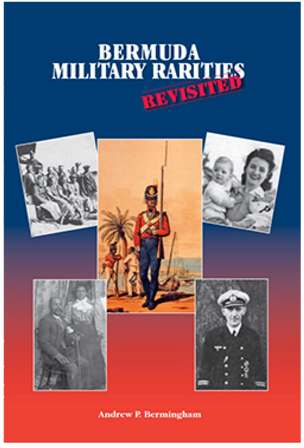 The Bermuda Historical Society’s new collection of gripping essays about the island’s long and often colourful military history includes accounts of the black Bermudian airmen who flew with the Royal Air Force in World War Two, the captured German U-boat hidden here during that conflict and Winston Churchill’s daring 1942 flight from the island to the UK.
The Bermuda Historical Society’s new collection of gripping essays about the island’s long and often colourful military history includes accounts of the black Bermudian airmen who flew with the Royal Air Force in World War Two, the captured German U-boat hidden here during that conflict and Winston Churchill’s daring 1942 flight from the island to the UK.
Launched last month “Bermuda Military Rarities, Revisited” is a collection of articles compiled by well known historian, author and former police officer Andrew Bermingham.
Originally published in 2003 and long out of print, this new edition includes several previously unpublished stories as well as other additional material.
“Assembled after years of dedicated research, Andrew Bermingham has pieced together a collection of features that takes the reader on a social journey through Bermuda’s history,” said the Historical Society’s John Cox in the introduction to the new edition.
“Focusing especially on the poignant and the unusual, this boojk will make a lasting impression on the readernot only for its important contribution to the island’s historical tapestry vbut for the book’s often touching human experience.
“Bermuda Military Rarities, Revisited” is available for $10 at the Historic Society’s museum in the Bermuda National Library on Queen Street and at the Bermuda Book Store.
Among the new material included in the book is the following 2012 Bernews account of British wartime leader Winston Churchill’s top-secret visit to Bermuda in 1942.
***
British Prime Minister Winston Churchill’s return to the UK from Bermuda aboard Boeing flying boat in January, 1942 — the first transatlantic air trip by a world leader — fired the imaginations not only of his devoted countrymen but of the entire democratic world.
People reading of his long flight from Bermuda and safe landing at Plymouth in the United Kingdom chuckled with affectionate glee mixed with relief.
With transatlantic air travel still in its infancy, the British wartime leader’s impulsive decision to fly from Bermuda was viewed as a characteristically audacious — and potentially perilous — move.
The Prime Minister had visited the island for a secret 24-hour stop-over and addressed the House of Assembly, expressing his gratitude to Bermuda for allowing the construction of US military bases the previous year.
He flew to Bermuda on January 15, 1942 from Virginia aboard the British Overseas Airline Corporation’s Boeing 314 flying boat “Berwick”. The British Prime Minister had been in Washington for several weeks after the sneak Japanese attack on Pearl Harbour on December 7, 1941 brought America into World War Two [1939-1945].
He had been conferring with ally President Franklin Roosevelt at the White House and had delivered one of his most famous wartime speeches — “the United States, united as never before, have drawn the sword for freedom and cast away the scabbard” — to a joint session of the US Congress.
Soon after the flight departed for Bermuda, the Prime Minister entered the “Berwick’s” cockpit smoking his trademark cigar, and Captain Kelly Rogers waived the rules and let him continue, even allowing him to strike a match when it went out.
He tried the controls of the huge craft, as Kelly Rogers whispered into the co-pilot’s ear, ordering him to apply corrections only if it looked as if the plane was getting out of the Prime Minister’s control.
Mr. Churchill was allowed to do a couple of slightly banked turns, and was photographed by one of the official cameramen [above and below].
He talked about his own flying career which had begun in 1913 when he founded the Royal Naval Air Service, and compared the Boeing Clipper with the primitive aircraft he had known then.
When Kelly Rogers made radio contact with accompanying American fighter escorts, Mr. Churchill asked if he could speak to them, but the captain ruled that out as too much of a security risk,
After about four hours they arrived at Bermuda and Kelly Rogers offered a sightseeing flight around the islands.
The Prime Minister was summoned from his seat below and came on the flight deck to view the sights, Mr. Churchill sitting in the co-pilot’s chair.
“The Prime Minister remained in the seat while I executed the landing,” Captain Rogers later recalled. “This is a privilege which is not normally accorded to passengers but conditions were ideal and I was able to handle all controls myself.”
Bermuda Governor Lord Knollys With Winston Churchill At Darrell’s Island
After landing in the Great Sound, the “Berwick” moored at Darrell’s Island, the main flying boat station in Bermuda. Mr. Churchill was met on arrival by Governor Lord Knollys and taken to Hamilton aboard a Royal Air Force launch.
From Hamilton he went to Government House and prepared for his address to the Bermuda Parliament.
During his address to the House of Assembly later that same day, the Prime Minister told the Members of Colonial Parliament that “you in Bermuda happen to be called upon to play a part of especial importance and distinction.
“Everybody has to do his duty to the cause — first to the British Empire, but above that to the world cause.”
The Prime Minister went on state, “I wish to express to you my strong conviction that these bases are important pillars of the bridge connecting the two great English-speaking democracies.
“You have cause to be proud that it has fallen to your lot to make this important contribution to a better world.”
He concluded his remarks by expressing his “profound gratitude” to Bermuda and Bermudians.
The Darrell’s Island Flying Boat Station
The battleship HMS “Duke of York”, with an escort of fast destroyers, had been dispatched to Bermuda to collect the Prime Minister to take him back to the United Kingdom.
But after flying to Bermuda by flying boat he decided that it might be preferable to return to England all the way by air, accompanied by only the most important members of his staff, including Sir Dudley Pound, Chief of the Naval Staff and Sir Charles Portal, Chief of the Air Staff.
A transatlantic air flight was no small undertaking at this time even for a Boeing clipper, widely regarded as representing the apex of flying boat technology.
Powered by four 1,600 horsepower engines, the magnificent 106-foot long aircraft had a wingspan of 152 feet and was designed to carry 68 passengers and 11 crew in unrivalled comfort for an aircraft of its era. Still, reaching the UK from Bermuda non-stop only just fell within the “Berwick’s” maximum operational range of 3,600 miles
British Second World War Battleship HMS “Duke Of York”
On the morning of the departure it appears that Churchill had some second thoughts about the journey: “I woke up unconscionably early with the conviction that I should certainly not go to sleep again. I must confess that I felt rather frightened. I thought of the ocean spaces, and that we should never be within a thousand miles of land until we approached the British Isles.
“I thought perhaps I had done a rash thing that there were too many eggs in one basket. I had always regarded an Atlantic flight with awe. But the die was cast. Still, I must admit that if at breakfast, or even before luncheon, they had come to me to report that the weather had changed and we must go by sea, I should have easily reconciled myself to a voyage in the splendid ship which had come all this way to fetch us.”
The Boeing 314′s departure from Bermuda on January 16 was not as easy as its arrival had been.
“It was, as the Captain had predicted, quite a job to get off the water,” Churchill later recalled. “Indeed, I thought that we should hardly clear the low hills which closed the harbour. There was really no danger; we were in sure hands. The flying-boat lifted ponderously a quarter of a mile from the reef, and we had several hundred feet of height to spare.”
Mr. Churchill was extremely taken with the luxury of this great clipper of the clouds, the experience rivalling that of a voyage on one of the great ocean liners widely used at that time
“There is no doubt about the comfort of these great flying-boats,” said the Prime Minister. “I had a good broad bed in the bridal suite at the stern with large windows on either side. It was quite a long walk, thirty or forty feet, downhill through the various compartments to the saloon and dining-room, where nothing was lacking in food or drink. The motion was smooth, the vibration not unpleasant, and we passed an agreeable afternoon and had a merry dinner.”
Contemporary Cutaway Illustration Of The Interior Of A Boeing 314
The trip from Bermuda to the southern English port city of Plymouth was a protracted one, a distance of 3,330 miles which the great aircraft was covering at an average speed of 190 miles per hour.
“Darkness had fallen, and all the reports were good,” said Mr. Churchill. “We were now flying through dense mist at about seven thousand feet. One could see the leading edge of the wings, with their great flaming exhausts pouring back over the wing surfaces. In these machines at this time a large rubber tube which expanded and contracted at intervals was used to prevent icing. The Captain explained to me how it worked, and we saw from time to time the ice splintered off as it expanded. I went to bed and slept soundly for several hours.”
Near the conclusion of the flight, Mr. Churchill was briefly at risk from both friend and foe alike.
On the morning of January 17, as the “Berwick” approached Britain, Captain Kelly discovered a navigational error in not sufficiently correcting for the prevailing winds. This had allowed the aircraft to drift south of its intended landfall.
“When they did not pass over the Isles of Scilly at the expected time it was realised that they were heading for the port of Brest, the most heavily defended of all the German occupied towns in Europe,” said historian Martin Cherrett, editor of the World War II Today website.
“They were only six miles off when the decision was made to turn abruptly north, and the Luftwaffe planes scrambled to investigate a raider heading in from the sea never found them. They were lucky again as they approached the Royal Navy base at Plymouth. Coming in from an unexpectedly southern direction they were now thought to be a German raider and ‘six Hurricanes from Fighter Command were ordered to shoot us down’ Churchill later recalled.”
Fortunately — as the Prime Minister curtly noted — “they failed in their mission.”
Brief Newsreel Footage Of Churchill Piloting The “Berwick” En Route To Bermuda & Arriving In The UK

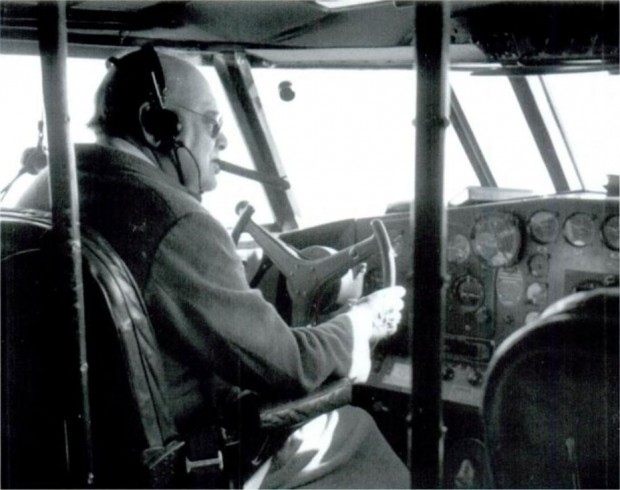
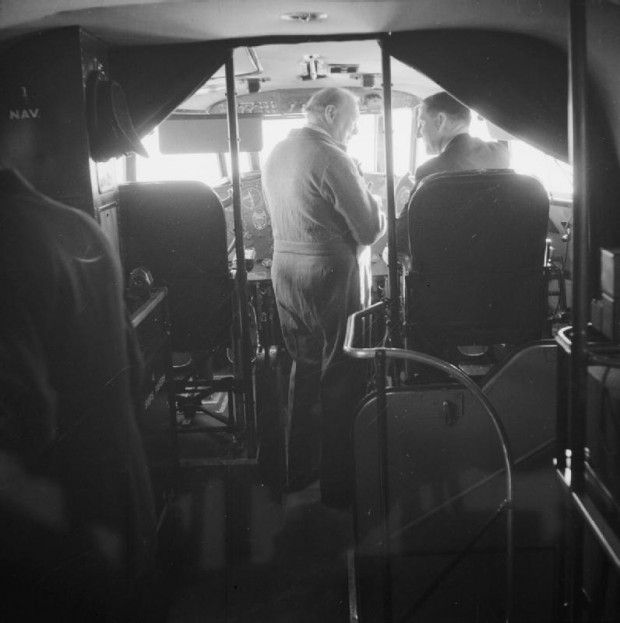
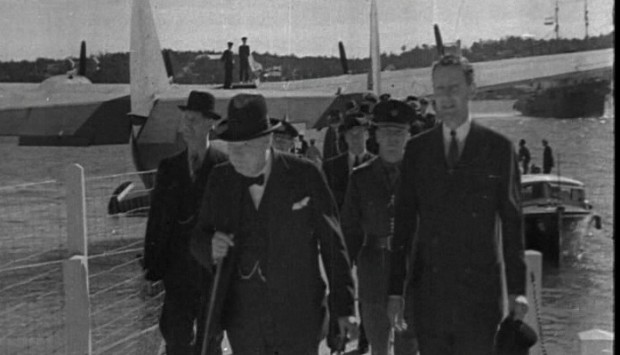
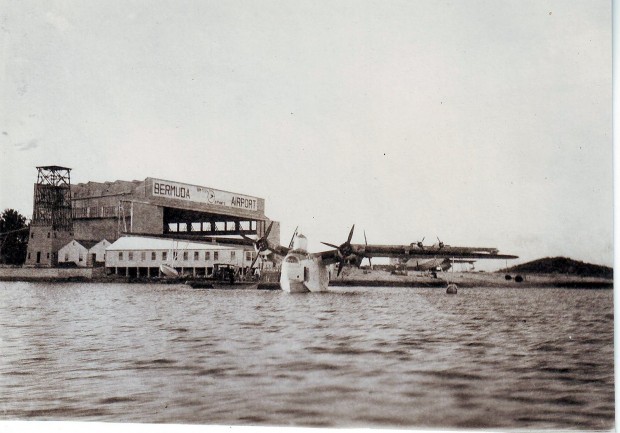
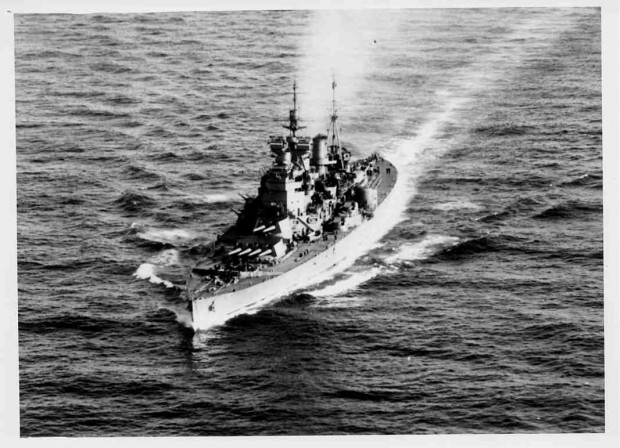
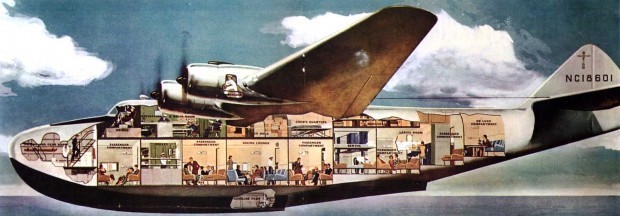

I just found this article by chance this past week. I am interested in purchasing the book “Bermuda Military Rarities, Revisited.” Can you provide me with any information on how I may purchase a copy of this book?
Thank you